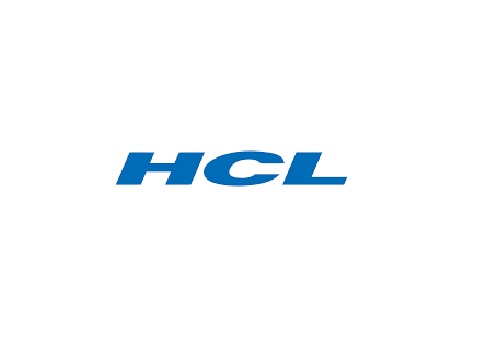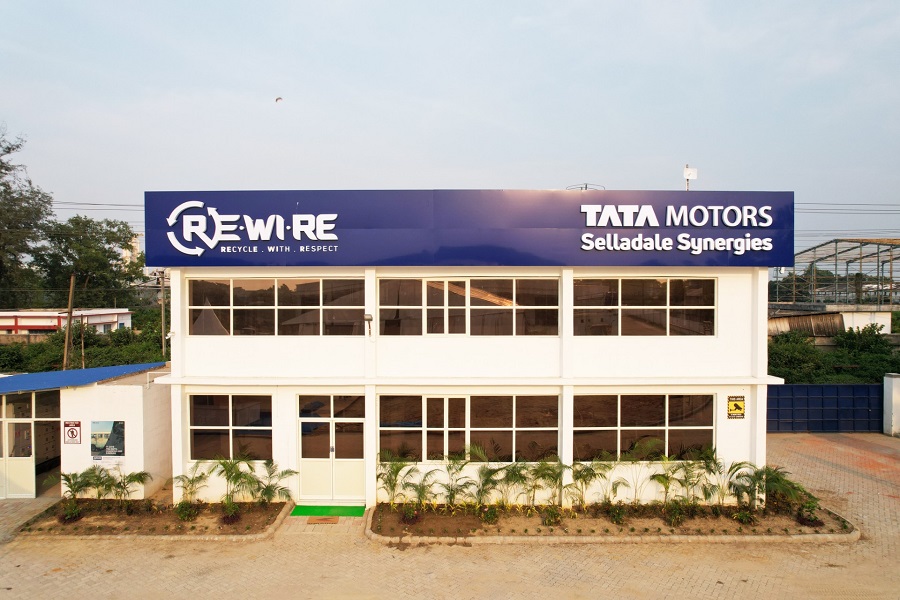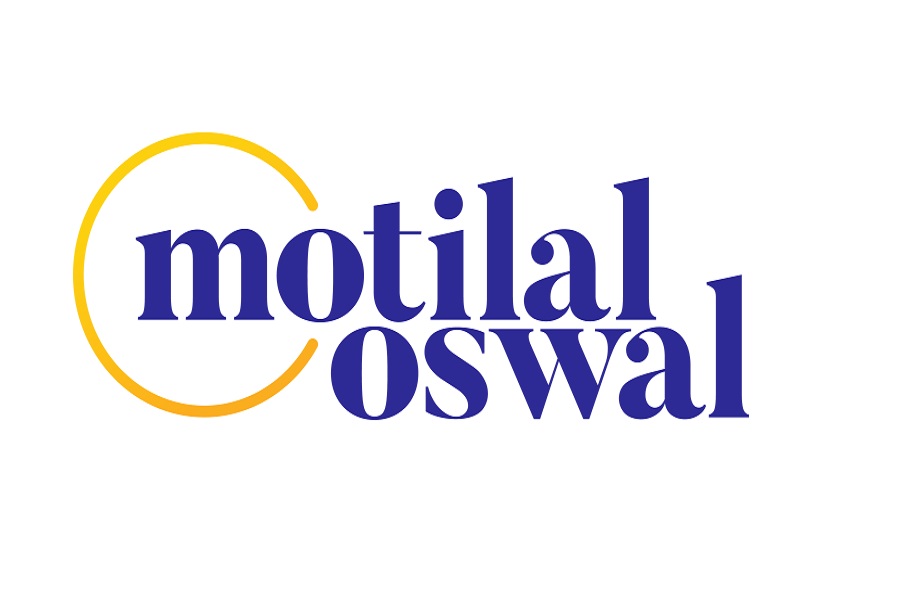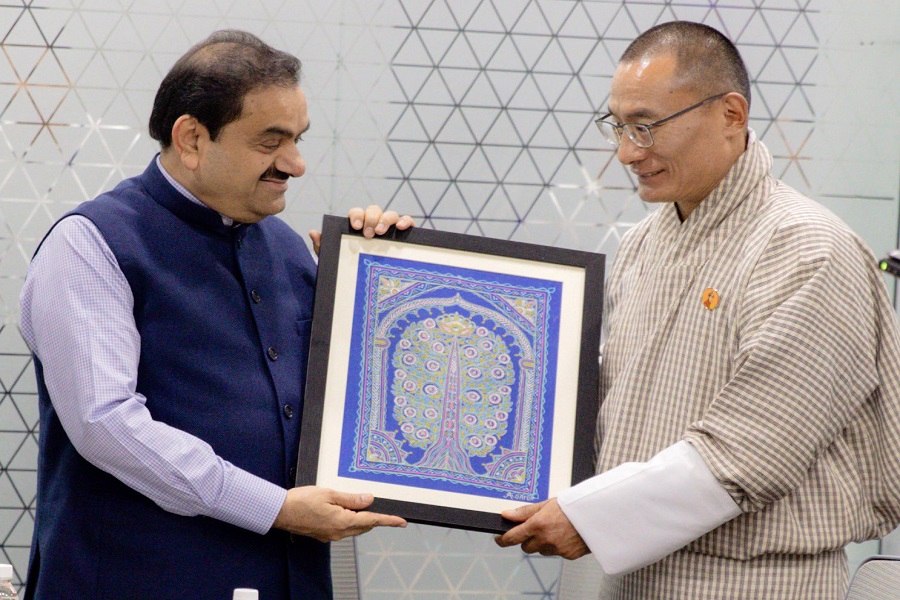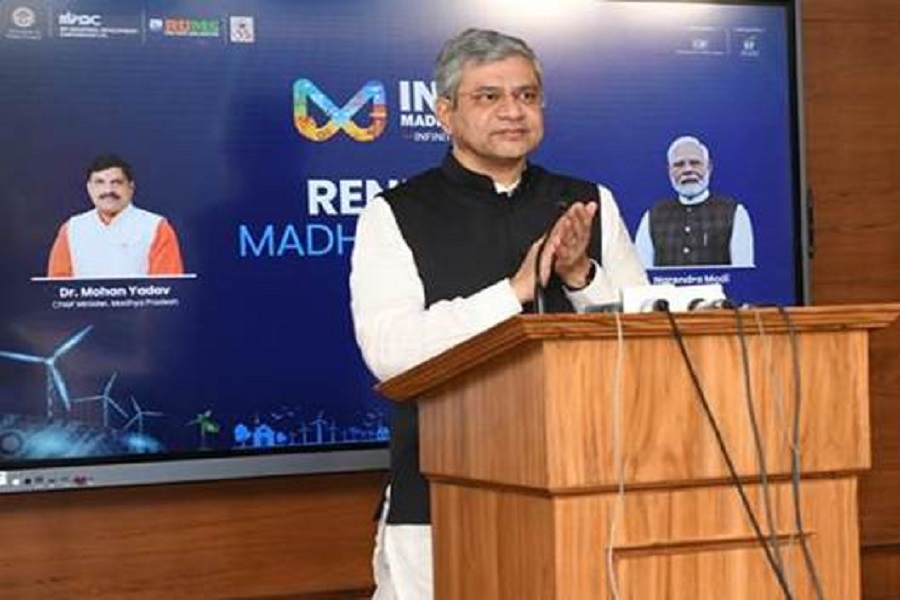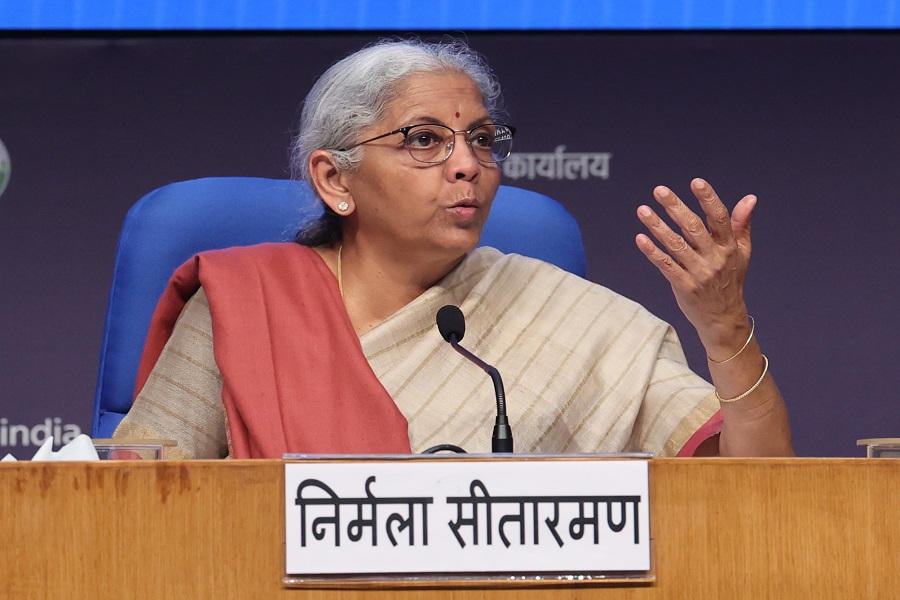Fedbank Financial Services coming with an IPO to raise Rs 1124.70 crore

Fedbank Financial Services
- Fedbank Financial Services is coming out with a 100% book building; initial public offering (IPO) of 8,03,35,633 shares of Rs 10 each in a price band Rs 133-140 per equity share.
- Not more than 50% of the issue will be allocated to Qualified Institutional Buyers (QIBs), including 5% to the mutual funds. Further, not less than 15% of the issue will be available for the non-institutional bidders and the remaining 35% for the retail investors.
- The issue will open for subscription on November 22, 2023 and will close on November 24, 2023.
- The shares will be listed on BSE as well as NSE.
- The face value of the share is Rs 10 and is priced 13.30 times of its face value on the lower side and 14.00 times on the higher side.
- Book running lead managers to the issue are ICICI Securities, BNP Paribas, Equirus Capital and JM Financial.
- Compliance Officer for the issue is Rajaraman Sundaresan.
Profile of the company
Fedbank Financial Services is a retail focused non-banking finance company (NBFC) promoted by The Federal Bank Limited. It has the second and third lowest cost of borrowing among the micro, small and medium enterprises (MSMEs), gold loan and MSME & gold loan peer set in India in Fiscal 2023 and three-months period ended June 30, 2023, respectively. As on March 31, 2023, the company had the third fastest AUM growth among NBFCs in the peer set in India with a three year CAGR of 33% between Fiscals 2020 and 2023, and the fourth fastest year-on-year AUM growth of 42% for three-months period ended June 30, 2023. The company is one among five private bank promoted NBFCs in India. It is the fastest growing gold loan NBFC in India among the peer set as of March 31, 2023, and had the fastest year-on-year growth among gold loan NBFCs in India as of June 30, 2023. As on June 30, 2023, 86.24% of its total Loan Assets are secured against tangible assets, namely gold or customer’s property.
The company is focused on catering to the MSMEs and the emerging self-employed individuals (ESEIs) sector. The ESEI and MSME segment is largely unaddressed by lending institutions in India. This segment provides the company with a sizeable opportunity to rapidly grow and expand further. It has a well-tailored suite of products targeted to match its customers’ needs, which includes mortgage loans such as housing loans; small ticket loan against property (LAP); and medium ticket LAP, unsecured business loans, and gold loans. The company had the third highest growth in disbursement among the peer set with a three year CAGR of 35% between Fiscals 2020 and 2023. Its mortgage loans, gold loans and its unsecured business loans had an AUM of Rs 47,024.46 million, Rs 31,241.72 million and Rs 14,872.49 million, respectively as on June 30, 2023.
The company has been rated “AA” by CARE for its non-convertible debentures (NCDs) since 2022, and “AA-” by India Ratings and Research Private Limited for its NCDs and bank loans since 2018.It is promoted by Federal Bank, which, adds a degree of trust among its stakeholders. Federal Bank will continue to own more than 51% of its outstanding share capital post the completion of the Offer. The company’s long operating history, track record, management expertise and the “Federal Bank” brand have enabled it to establish a competitive position in the markets it serves and create trust among its customers, lenders, regulators and investors.
Proceed is being used for:
- Augmenting its Tier - I capital base to meet its future capital requirements, arising out of the growth of its business and assets
- Meeting Offer Expenses
Industry Overview
The NBFC sector has, over the years, evolved considerably in terms of size, operations, technological sophistication and entry into newer areas of financial services and products. The number of NBFCs as well as the size of the sector have grown significantly, with a number of players with heterogeneous business models starting operations. Over the last few years, CRISIL MI&A has seen a transformation in the Indian financial services landscape. The increasing penetration of neo-banking, digital authentication and mobile phone usage as well as mobile internet has resulted in the modularization of financial services, particularly credit.
The sector has also seen the emergence of a number of finTechs that leverage technology, data, and business insights to provide various financial products and services to identified customer segments. FinTech players in India started lending in Fiscal 2015 but they started gaining traction from Fiscal 2017 onwards. The business model of finTech firms differ widely but in almost all cases they use technology to change or support existing way of doing business, and hold the promise of enhancing customer convenience, facilitating access to credit for unserved or underserved customer segments and/or improving operating efficiency. Many times, finTechs enter into tie-ups with financing partners (banks and NBFCs) for taking the loans originated by them on the balance sheet of the partner. Reflecting the growing importance of NBFCs in the financial services landscape and their ability to offer differentiated solutions to meet the requirement of target customers, the market share of NBFCs in overall systemic credit has increased from approximately 16% in Fiscal 2017 to approximately 18% in Fiscal 2023.
Meanwhile, gold loans are typically small ticket, short duration, convenient and instant credit. While the industry has been around for several decades with local financiers and moneylenders extending finance against gold, especially in semi-urban and rural areas, the industry has witnessed a spurt in organized financiers offering gold loans since 2008 with the specialized gold loan NBFCs expanding their branch network and making available loans in a very easy and consumer friendly manner by putting in place strong systems and processes. Though moneylenders and pawn brokers understand the psyche of local borrowers and offer immediate liquidity without any documentation formalities, customers are left vulnerable to exploitation, due to the absence of regulatory oversight. Such players also give lower LTV compared with organized ones while charging exorbitant interest.
Pros and strengths
Focused on retail loan products with a collateralized lending model: The company is largely focused on a collateralized lending model for its retail finance segment, targeting ESEI consumers and the emerging MSME sector. As on June 30, 2023, 86.24% of its total Loan Assets are secured against tangible assets, namely its customer’s gold or property. The company’s average ticket size was Rs 0.13 million in the three-months period ended June 30, 2023. Out of the collateral for its medium ticket LAP and small ticket LAP, 77.37% of its collateral is self-occupied residential or commercial property as of June 30, 2023. As on June 30, 2023, average LTV on its total Loan Assets with property collateral at the time of sanctioning the loan was 51.37%. In its experience, the value of collateral property generally appreciates over time. In addition, its LTV at the time of sanction further reduces over the term of the loan as the loan is serviced.
Strong underwriting capability: The company has an effective underwriting capability, built on its experienced underwriting team and established processes, which assess the quality of its potential customers’ business and collaterals, and then reasonably estimate the possibility of defaults, prior to disbursal of loans. The percentage of its retail installment loans which are underwritten is represented by the sanction to login ratio, which was 40.05%, 44.01%, 45.30%, 45.83% and 43.51% for the three-months periods ended June 30, 2023 and June 30, 2022, and Fiscals 2023, 2022 and 2021, respectively. It recognizes risk management as an integral part of its business. It has formulated its risk management policy taking into account, among others, the practices and principles governing risk management prescribed by the RBI. The company’s Board, supported by its senior management team, takes the lead in establishing a strong risk management culture. Its risk management framework is driven by its Board and its subcommittees including the Audit Committee, the Risk Management Committee and the asset liability committee of the company.
Well diversified funding profile: The company’s ability to access diversified sources of funding is a key contributor to its growth. It intends to continue to diversify its funding sources, identify new sources and pools of capital and implement robust asset liability management policies with the aim of further optimizing its borrowing costs and help expand its net interest margin. The company’s average cost of borrowing was 2.22%, 1.86%, 7.77%, 7.44% and 8.30% for the three-months periods ended June 30, 2023 and June 30, 2022, and Fiscals 2023, 2022 and 2021, respectively. It has the ability to access borrowings at a competitive cost due to its stable credit history, credit ratings, conservative risk management policies and strong brand equity.
Technology driven company with scalable operating model: The company is a technology driven company using systems with digital infrastructure to manage a scalable and sustainable operating model. This enables it to expand and scale its businesses and drive growth in revenue at lower incremental costs. The company’s technology stack is deployed with customized tools and applications that enhances operational efficiency, automation and customer convenience. During the three-months period ended June 30, 2023, and Fiscals 2023, 2022 and 2021, it has invested an aggregate amount of Rs 255.93 million in its information technology and digital systems. The company’s continuing investment in technology systems will enable it to improve recoveries and reduce its operating expenses, its cost of customer acquisition and credit costs over time. It will also enable it to expand its efficiency through automations and further deepen customer engagement with digital touchpoints and maximize digital delivery. The company leverages its information technology platforms to drive economies of scale through increase in productivity, reduce turnaround time in processing and reduce transaction costs.
Risks and concerns
Operations are concentrated in few states: As of June 30, 2023, the company conducted its operations through 584 branches, of which 237 branches were located in western and northern India in the states/union territory of Gujarat, Maharashtra and Delhi and 272 branches were located in southern India in states of Telangana, Andhra Pradesh, Tamil Nadu and Karnataka. The retail lending and financial services markets in these regions may perform differently from and may be subject to market conditions that are different from, the retail lending and financial services markets in other regions in India. Consequently, any significant social, political or economic disruption, or natural calamities or civil disruptions in these regions, or changes in the policies of the state or local governments of these regions or the Government of India, could disrupt its business operations, require it to incur significant expenditure and change its business strategies. The occurrence of or its inability to effectively respond to any such event, could have an adverse effect on the company’s business, results of operations, financial condition and cash flows.
Significant portion of business is derived from gold loan products: The company is dependent on its gold loan products for a significant portion of its revenues. The revenue from gold loan was Rs 2986.03 crore (32.92%) in FY23, Rs 2247.53 crore in FY22 (36.33%) and Rs 1917.79 crore in FY21 (39.44%). However, the company’s revenue from gold loan products may decline as a result of increased competition, regulatory action, litigation, or fluctuation in the demand for such products, which may adversely affect its business, results of operations, cash flows and financial condition.
Business depends on reputation of Federal Bank: Reputational risk, or the risk to its business, earnings and capital from negative publicity, is inherent in its business. The reputation of the banking and financial services industry in general has been closely monitored as a result of the global financial crisis and other matters affecting the financial services industry. Negative public opinion about the banking and financial services industry generally or it specifically could adversely affect its ability to attract and retain customers and may expose it to litigation and regulatory action. Furthermore, the company is associated with its Promoter, Federal Bank, and the “Federal Bank” brand in general. Its revenue, results of operation, business and prospects are, to a certain extent, dependent on the strength of the brand and reputation of its Promoter, Federal Bank, and the Federal Bank group entities. If the perception or reputation of the “Federal Bank” brand deteriorates due to reasons beyond its control, it could adversely affect its businesses, its reputation and the “Federal Bank” brand, which could materially and adversely affect the business and prospects.
Operate in a highly regulated industry: The company operates in a highly regulated industry, and it has to adhere to various laws, rules and regulations. The company has a certificate of registration from the RBI to operate as an NBFC-ND-SI and is regulated by the RBI. Accordingly, legal and regulatory risks are inherent and substantial in its business. As it operates under licenses and registrations obtained from the applicable regulators, such as RBI and the Financial Intelligence Unit, India, the company is subject to actions that may be taken by such regulators in the event of any non-compliance with any applicable policies, guidelines, circulars, notifications and regulations issued by the relevant regulators.
Outlook
Fedbank Financial Services is a retail-focused NBFC, with the second lowest cost of borrowing among the MSMEs, gold loan, and MSME & gold loan peer set in India in Fiscal 2023. The company's clientele comes mainly from the MSME and emerging self-employed individuals (ESEI) sectors. The company's product range includes mortgage loans such as housing loans; small ticket loans against property (LAP); and medium ticket LAP, unsecured business loans, and gold loans. On the concern side, a significant portion of the company’s business is derived from its gold loan products and the loss of business in relation to such gold loan products could adversely affect business and prospects. Moreover, as on June 30, 2023, 93.65% of its gross AUM was located in Gujarat, Maharashtra, Telangana, Andhra Pradesh, Tamil Nadu, Karnataka, Puducherry and Delhi. Accordingly, its operations are concentrated in six states and two union territories and any adverse developments in these regions could have an adverse effect on its business and results of operations.
The issue has been offered in a price band of Rs 133-140 per equity share. The aggregate size of the offer is around Rs 1068.46 crore to Rs 1124.70 crore based on lower and upper price band respectively. Minimum application is to be made for 107 shares and in multiples thereon, thereafter. On performance front, the company’s total revenue increased by 37.46% to Rs 12,146.80 million for Fiscal 2023 from Rs 8,836.37 million for Fiscal 2022. This increase was primarily due to an increase in revenue from operations. Moreover, the company’s profit for the year increased by 74.11% to Rs 1,801.33 million for Fiscal 2023 from Rs 1,034.59 million for Fiscal 2022.
As of June 30, 2023, the company is present in 17 states and union territories across India with a strong presence in Southern and Western regions of India. As of June 30, 2023, it covered 190 districts in the 17 states and union territories in India through 584 branches. The company’s presence across these states gives it the ability to meet the demand from these under-penetrated markets and customer categories. Going forward, the company intends to continue to focus on its branch level AUMs to increase its total number of customers and total AUM. Further, it has adopted a contiguous strategy wherein it aims to expand across regions in India where it has a presence and expand to adjacent geographies by evaluating areas with established credit culture.

